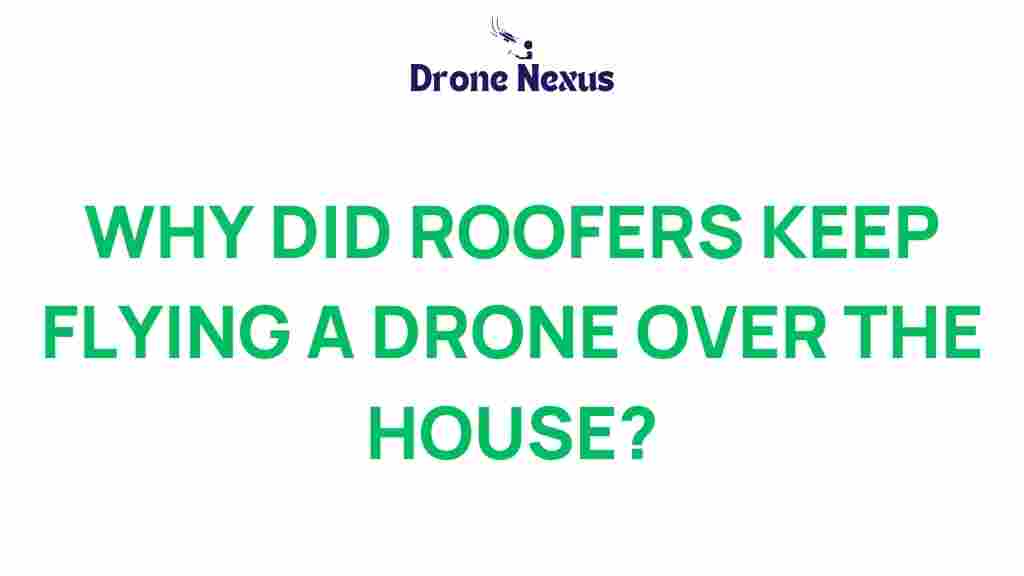Drones: The Future of Roofing Inspections
The roofing industry has seen significant advancements over the years, but none quite as revolutionary as the integration of drones. These aerial devices are transforming the way roofers conduct inspections, assessments, and repairs, reducing time and enhancing safety. In this article, we will explore the reasons roofers are utilizing drones over homes, the benefits they offer, and how you can leverage this technology for your roofing needs.
Understanding the Benefits of Drones in Roofing
Before diving into the specifics of how roofers use drones, it’s crucial to understand why they are becoming a standard tool in the roofing industry. Here are some key benefits:
- Enhanced Safety: Traditional roofing inspections often require professionals to navigate steep pitches and precarious heights. Drones eliminate the need for roofers to physically climb onto roofs, reducing the risk of accidents.
- Time Efficiency: Drones can quickly cover large areas, providing comprehensive inspections in a fraction of the time it would take a human team.
- High-Quality Imaging: Equipped with high-resolution cameras, drones can capture detailed images and videos, allowing roofers to assess conditions accurately.
- Cost-Effectiveness: By streamlining the inspection process, drones can save roofers time and money, which can subsequently reduce costs for homeowners.
- Access to Hard-to-Reach Areas: Drones can easily navigate challenging terrains and tight spaces that may be difficult for humans to reach.
The Step-by-Step Process of Using Drones for Roofing Inspections
Now that we understand the numerous benefits of drones in roofing, let’s look at how roofers utilize them in a typical inspection process:
Step 1: Planning the Inspection
Before any flight, roofers conduct a thorough planning session. This includes:
- Assessing the site location.
- Identifying any potential hazards.
- Obtaining necessary permissions or permits for drone usage.
Step 2: Pre-Flight Checks
Safety is paramount when using drones. Roofers perform pre-flight checks to ensure:
- The drone is in good working condition.
- All batteries are fully charged.
- The camera and sensors are functioning correctly.
Step 3: Conducting the Flight
Once the planning and checks are complete, the drone is launched. This phase may include:
- Capturing aerial imagery of the roof.
- Using thermal imaging to identify heat leaks or moisture issues.
- Documenting data for future reference.
Step 4: Analyzing Data
After the flight, roofers analyze the data collected. This involves:
- Reviewing high-resolution images.
- Identifying problem areas such as damaged shingles or leaks.
- Creating a detailed report for the homeowner.
Step 5: Presenting Findings
Finally, roofers present their findings to the homeowner. This step includes:
- Sharing the visual data collected by the drone.
- Discussing necessary repairs or preventative measures.
- Providing a transparent understanding of the roof’s condition.
Troubleshooting Common Drone Issues
While drones offer many advantages, they are not without their challenges. Here are some common issues roofers may encounter and how to troubleshoot them:
1. Battery Life Issues
Drones have a limited flight time, typically ranging from 20 to 30 minutes. To manage this:
- Always have spare batteries on hand.
- Plan your flight paths efficiently to maximize battery usage.
2. GPS Signal Loss
In areas with tall buildings or dense trees, GPS signals can be unreliable. If this occurs:
- Use manual flight mode to guide the drone.
- Reposition the drone to a more open area for a stronger signal.
3. Weather Conditions
Inclement weather can hinder drone flights. To mitigate this:
- Check weather forecasts before planning flights.
- Postpone flights during high winds, rain, or snow.
Conclusion: Embracing the Future of Roofing with Drones
The roofing industry is undergoing a significant transformation thanks to the adoption of drones. By enhancing safety, improving efficiency, and providing high-quality images, drones are becoming an indispensable tool for roofers. As technology continues to evolve, the potential applications of drones in roofing will only expand, making it essential for contractors and homeowners alike to embrace this innovation.
For more information on how to choose the right roofing contractor who utilizes modern technology like drones, visit our resource page.
If you’re interested in learning more about drone technology and its applications, check out this informative article.
By understanding the benefits and processes involved in using drones for roofing, you can make informed decisions about your roofing needs and ensure your home is in the best possible condition.
This article is in the category Technology and created by DroneNexus Team
